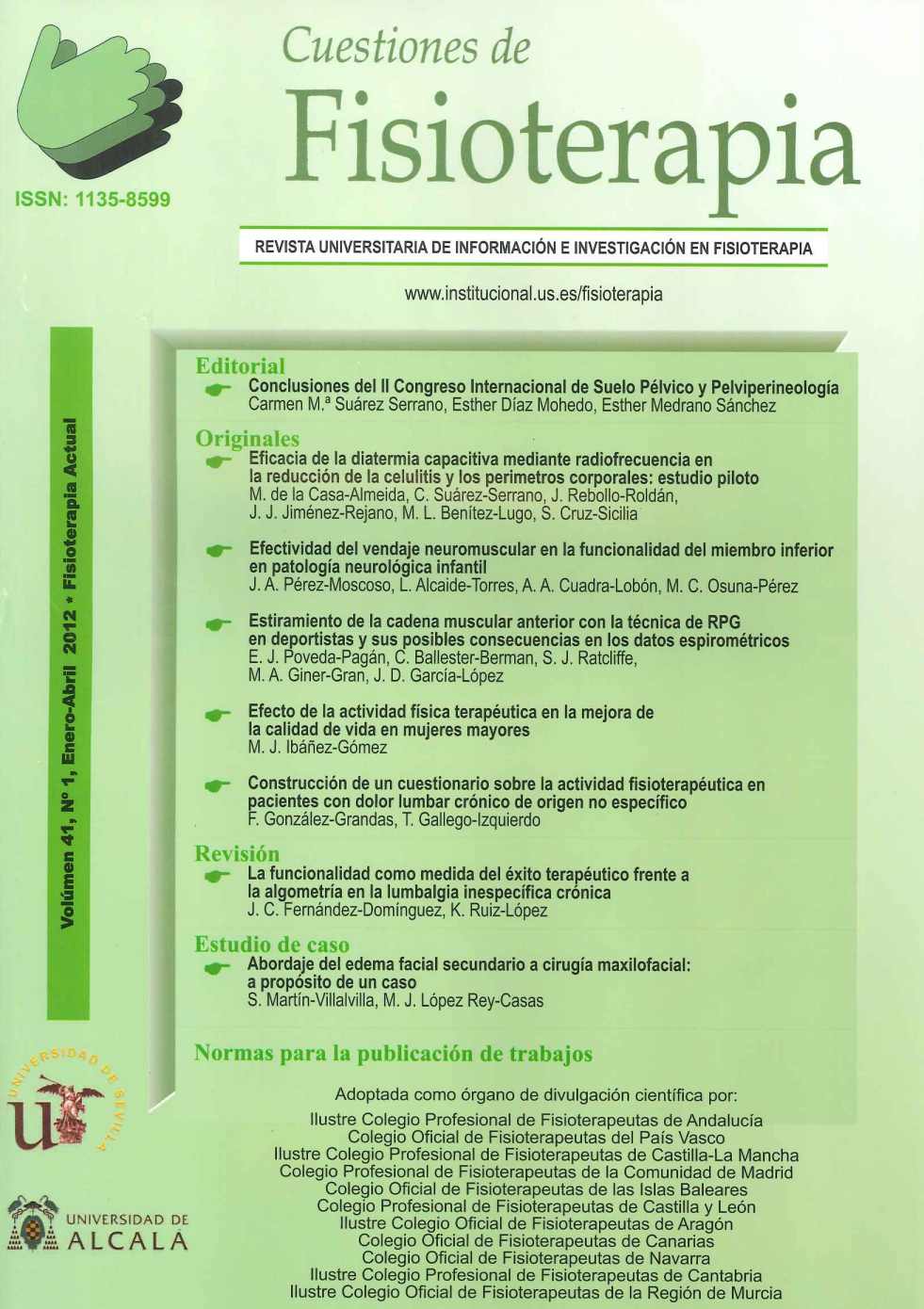Articles
Year 2014, Volume 43, Issue 1
A correlational pilot study of the variables that affect cervical disability among students of Alcalá University
Abstract
Introduction: the main purpose of this study is to assess whether there is an association among academic stress levels and the degree of neck pain disability between the students of Alcalá University who suffer cervicalgia. Material and method: observational, descriptive, correlational pilot study. Sampling type: convenience sampling test. A sample of 110 subjects was available for the study, 105 of whom matched the age criteria of being between 18 and 25 years old while also being students at Alcalá University and not being previously diagnosed of any cervical pathology. The variables and instruments used for the research were: 1. Sociodemographic factors; 2. Stress levels according to the SISCO academic stress inventory; 3. Neck pain disability based on the Neck Pain Disability Index Questionnaire; 4. Physical activity according to the International Physical Activity Questionnaire (short form); 5. Pain intensity according to the Numeric Pain rating Scale. Results: there is a statistically significant positive correlation between academic stress levels and the neck pain disability index (Spearman’s Rho = 0.254 with p = 0.025). However, a correlation between the neck pain disability index and physical activity was not found (Spearman’s Rho = - 0.083 with p = 0.264). 57.1% of the participants showed neck pain while 42.9% did not. On the other hand, there is not a significant difference in the percentage of subjects with and without neck pain in between students from different careers (X2(4, 105) = 7.027, p = 0.134). Conclusions: a significant positive correlation was found between academic stress and neck pain disability, that is to say, the higher the academic stress levels, the higher the neck pain disability index. However, no correlation was found between physical activity and neck pain disability.
Keywords: neck pain, stress psychological, motor activity, risk factors, students.

